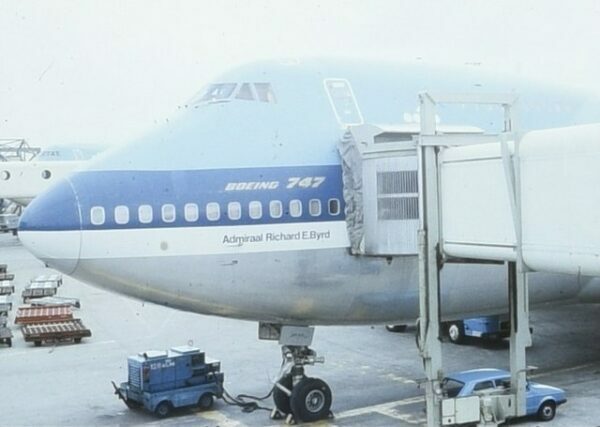On September 30, 1968, the public saw the “Queen of the Skies” for the first time, the Boeing 747. One of the most iconic and influential commercial aircraft in aviation history, its story began in the late 1960s when Boeing initiated the development of a large, wide-body aircraft to meet the growing demand for long-haul air travel. The 747 project was born out of a desire to create a revolutionary and cost-effective solution for transporting a large number of passengers across the world.
“Boeing initially considered building the 747 outside of Washington state,” writes History Link, “but eventually settled on 780 acres of land near Everett. Located next to Paine Field, the property was hilly and heavily wooded. More than four million cubic yards of dirt had to be removed to make way for the world’s largest building under a single roof.
Construction moved quickly, but barely fast enough to keep up with the schedule. Work began on the 747 mockup before the walls of the mockup building were complete. Workers on the assembly line had to wear heavy clothing during the winter, because the building was not yet been heated.
Original plans for the 747 included a double-deck design, but this concept was nixed due to concerns about emergency evacuations. Instead, the plane was given a wide-body design, the first in the world. The plane’s distinctive hump behind the cockpit came about due to aerodynamic streamlining, but was used to house a passenger lounge at the suggestion of Juan Trippe.”
The jet could carry up to an astonishing 490 passengers.
The 747 made its maiden flight on February 9, 1969, and entered commercial service with Pan American World Airways (Pan Am) in January 1970. Its introduction revolutionized air travel by significantly lowering the cost per seat mile and making long-haul flights more affordable for the general public. The aircraft’s range and capacity led to the growth of international travel and opened up new routes, making it a symbol of globalization.
Over the years, the 747 family evolved with various models, including the 747-200, 747-300, and 747-400, each offering improved performance, range, and fuel efficiency. The 747 became a popular choice for airlines worldwide and served as a flagship aircraft for many carriers. Its versatility also allowed for adaptations such as cargo versions (747-400F) and even the famous Air Force One, the United States presidential aircraft.
While the 747 was once the epitome of long-haul travel, the aviation industry gradually shifted toward smaller, more fuel-efficient twin-engine aircraft. Boeing introduced the 747-8 in 2012, featuring advanced technology and increased fuel efficiency, but the demand for large four-engine aircraft continued to decline. As a result, Boeing announced the end of 747 production in 2022. Nevertheless, the 747 will forever be remembered as an aviation legend, having shaped the course of air travel and made the world a more connected place.






